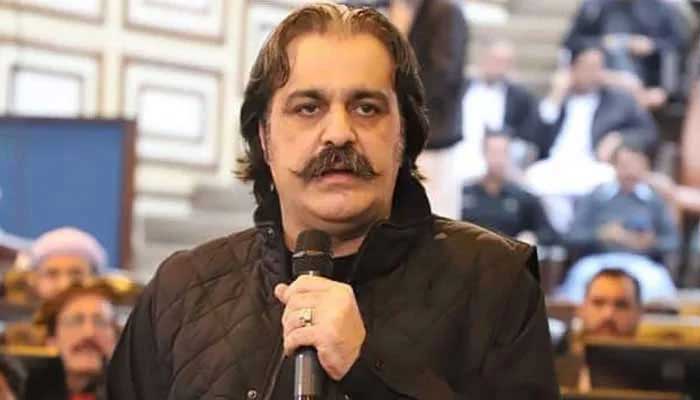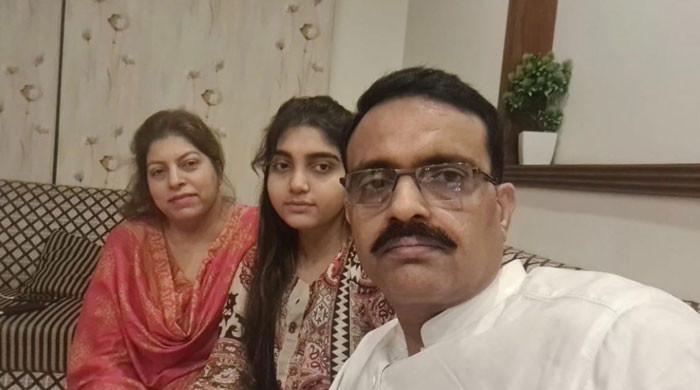Immediate or pending: When does a CM truly step down?
CM's resignation becomes effective upon his addressing it to governor under Article 130(8), says Advocate Niazi
October 12, 2025

KARACHI: Legal experts are split on the issue of when a chief minister's resignation takes effect, some saying it becomes final the moment it is submitted to the governor, while others argue that formal acceptance is still required before a new chief minister can be elected.
The debate has gained urgency after the KP Assembly was summoned for October 13 to choose Ali Amin Gandapur's successor. Khyber Pakhtunkhwa Governor Faisal Karim Kundi confirmed the receipt of Ali Amin Gandapur's resignation from the top provincial slot on Saturday.
However, the governor's office has said that "after thorough scrutiny and legal formalities as per the constitution [and] relevant laws, subject resignation will be processed in due course of time".
With sides already drawn on whether a new chief minister in KP can be elected without a "formal acceptance" of Gandapur's resignation, legal experts weigh in on two key questions: does the governor have the right to delay accepting a resignation, and can a CM election not be held until then?
Talking to the publication, high court advocate Hassan Abdullah Niazi says: "In my opinion, a chief minister's resignation becomes effective upon his addressing it to the governor. This is the procedure laid down in Article 130(8) of the constitution".
He explains that, while constitution is silent on whether the governor must accept or may delay acceptance of the resignation, Article 133 allows the governor to ask the chief minister to continue in office until a successor is appointed, "but that is the extent of the power in this case". For Niazi, the office of the CM “falls vacant as soon as the resignation is given to the governor".
Barrister Ali Tahir finds the constitutional provision "quite simple". According to him, when a chief minister submits a resignation to the governor under Article 130(8), "the only condition is that the resignation must be written by hand. Once the chief minister has sent that handwritten resignation, in my reading of the constitution, it stands accepted immediately".
As for the governor's role, Tahir says it is "purely clerical. He cannot sit on or withhold a chief minister’s resignation. Once it has been sent in the chief minister’s own handwriting, it takes effect immediately".
In practical terms, Tahir argues, this whole debate is largely redundant since the provincial assembly has "full constitutional authority to remove or appoint a chief minister in a single sitting, as long as the majority of its members support the move. It is the governor's constitutional duty to ensure that the chief minister in office commands the confidence of the assembly".
He adds that it is also the governor's responsibility to appoint as chief minister the person who commands the confidence of the majority of the assembly, so the governor "has no constitutional authority to withhold a resignation in any case".
Calling the matter "straightforward", he says that once a resignation has been submitted, the governor’s task is merely administrative and "even if he does not act, the provincial assembly retains full power to elect a new chief minister".
And can the governor just refuse to accept a chief minister's resignation? "Absolutely not," says Barrister Tahir. "The constitution, at no point, provides any mechanism or authority for accepting or rejecting a resignation, nor does it outline any consequences or criteria for doing so".
Not everyone agrees, however. Hafiz Ehsaan Ahmad Khokhar, advocate of the Supreme Court, argues that a chief minister’s resignation does not become effective until the governor "formally accepts it under Article 130(8) of the constitution....and, until acceptance, the chief minister continues to hold office and exercises all constitutional powers".
While the constitution does not prescribe a fixed timeline for acceptance, Khokhar is of the view that the governor is under a "constitutional duty to act within a reasonable time, balancing governance needs and public interest. Judicial interpretation under Articles 199 and 32 supports review of undue delay in constitutional obligations. Nonetheless, there is no statutory minimum period, leaving the timing of acceptance to the governor’s discretion, guided by reasonableness".
Regarding any CM election in the meantime, Khokhar maintains that, until the resignation is accepted, the governor "may summon the provincial assembly to transact business, but any election for a new chief minister before the office becomes vacant would be constitutionally impermissible".
The real dilemma, it seems, lies in how Article 130 is interpreted. Supreme Court advocate Basil Nabi Malik breaks down some of these interpretative complexities. He points out that "Article 130 does not provide for any formal approval or acceptance by the governor, whereas, via Article 133, the governor can ask the CM to continue till his successor is appointed.
"A possible interpretation could be that the governor does not have the power to reject the resignation, and any 'rejection' or inaction on it could be seen as an invocation of Article 133 — that is, by not accepting the resignation or refusing to accept it, the governor has in effect sought for the CM to continue till his successor is appointed".
Malik believes this interpretation is "a lot more reasonable than the alternative, which essentially compels an unwilling member of the provincial assembly to act in a position and assume responsibilities that s/he is no longer willing to assume".
Essentially, says Malik, the resignation would be effective, but the CM would continue in office till a new CM is appointed. "So it is conceivable to interpret it to mean that [the governor] can suggest a continuation but cannot force him to do so".
There is, however, a problem with this reading. Malik warns that it leaves "a very dangerous gap in the political system, which the constitution would always seek to avoid. So an interpretation that would make it most workable would be that the resignation is effective, but the CM would have to continue till his replacement is appointed via the assembly".
Originally published in The News









